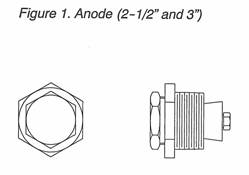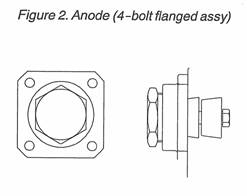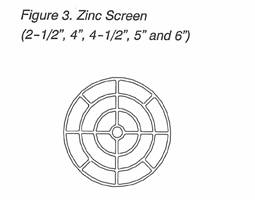Cathodic Protection
EXTEND THE LIFE OF YOUR PUMP WITH TIPS FROM THE PROS.
Cathodic Protection: Why do we need Sacrificial Anodes in Our Pumps Today?
Any time we have two different metals that are physically or electrically connected and immersed in water, they become a “battery”. A small amount of current will flow between the two metals. One of the metals gives up bits of itself in the form of metal ions to the current in the water. The more active metal is the anode and the less active metal is the cathode, and is protected. This is called galvanic corrosion and over time destroys dissimilar metals in water. Galvanic corrosion is often misnamed “electrolysis”. Electrolysis is a similar reaction, but is done by adding an electric current usually to provide a metallic coating. The most common damage from galvanic corrosion in a fire pump is to the cast iron body and related components. Fire fighting pumps utilize many different water sources. Comparing galvanic reaction in a fire pump to a DC battery the active metal (iron body) is the anode and the less active metal (bronze impeller/wear rings, check valve, flap valves) becomes the cathode and is protected. The by–products of galvanic corrosion, such as rust flakes, can also be detrimental to discharge valves, seals, pilot valves, etc.
The way we counteract galvanic corrosion is to add a third metal into the circuit. The third metal has to give up its ions easier than the other two metals. This piece of metal the sacrificial anode, in our application, is zinc.
Sir Humphrey Davy first developed cathodic protection in 1824 as a means of controlling corrosion on British naval ships. Today we can protect our pumps by using zinc screens and magnesium anodes. In the past our pump was provided with some passive protection from anodes in the booster tank.
The problem now is most tanks are plastic or fiberglass and do not require anodes. Anodes are an inexpensive addition and will lengthen pump life.
The amount of protection a magnesium anode provides depends on the surface area of the magnesium. Usually a magnesium surface area equal to 1% of the area of the metal you are protecting is a good starting point. In a midship mounted centrifugal pump it is a good idea to have zinc screens and at least one magnesium anode for each main intake fitting.
Once a month check the intake screens to make sure they are not clogged or damaged. Also check for corrosion, and replace screens if damage is serious. For the zinc screens to adequately control corrosion there must be a strong electrical connection between the screen and the intake fitting. Remove any corrosion that may be insulating the screen from the intake fitting. Most screens have an adjustable tab on the O.D. of the screen, which can be positioned to ensure a tight fit. Magnesium anodes should be checked twice a year for corrosion. Anodes should be replaced when about half of the anode has been sacrificed to corrosion. It is important to maintain the anodes installed on a pump. When the magnesium is gone, the metal component it was intended to protect begins to corrode––guaranteed. Zinc screens and magnesium anodes cannot perform their function unless they are exposed to water in the pump. Never coat zinc screens or magnesium anodes with paint or anything else. Of course, some corrosion of the iron will occur. The severity depends on the water conditions and the maintenance of the anodes. Zinc screens and magnesium anodes are optional, however it is important to include them in your pump specifications. The cost is small compared to the cost of a pump body and related components. Anodes can also be added to existing pumps.



If you have any questions regarding this information or need any assistance, please contact us at:
Telephone: 651-450-5200
Fax: 800-488-1228
service@waterousco.com